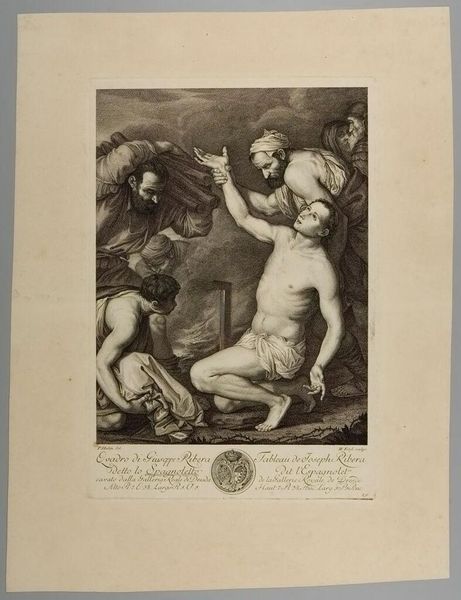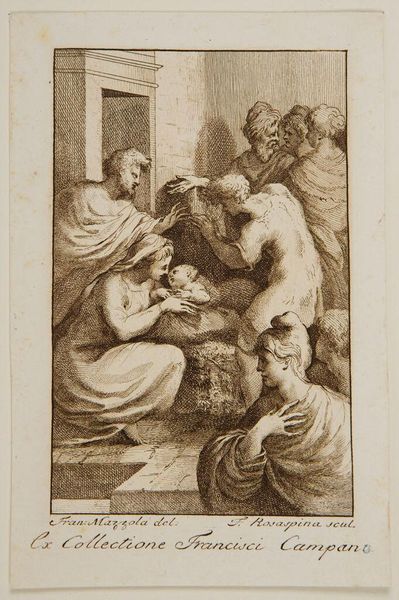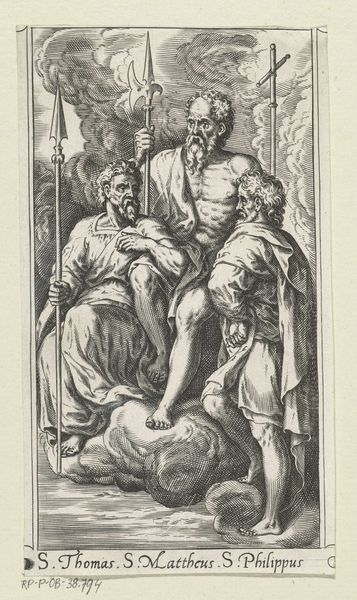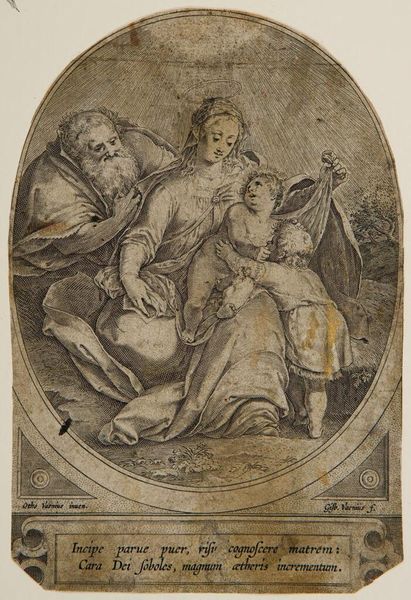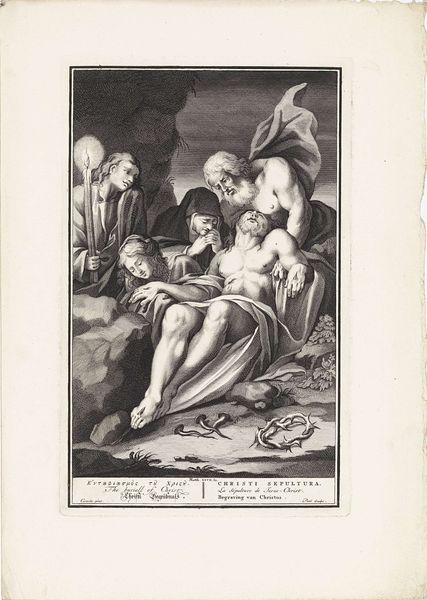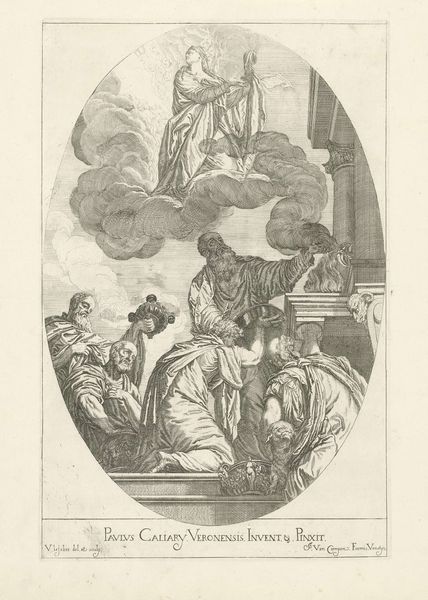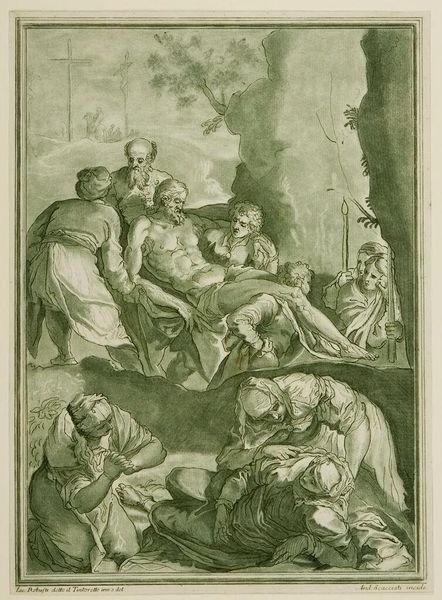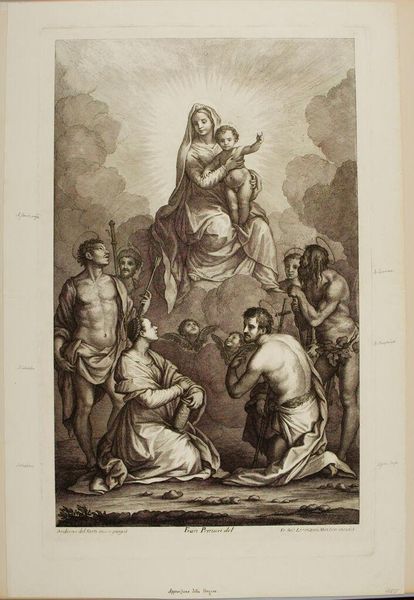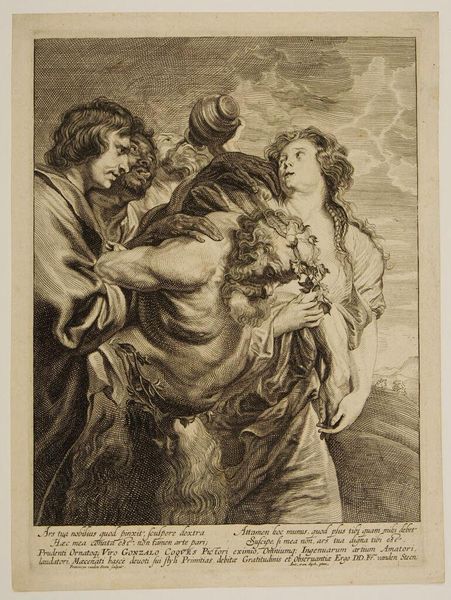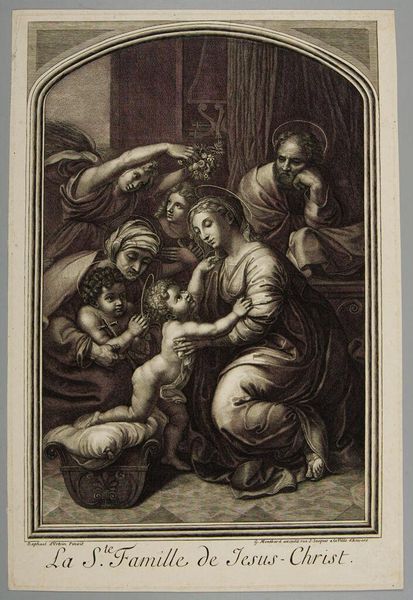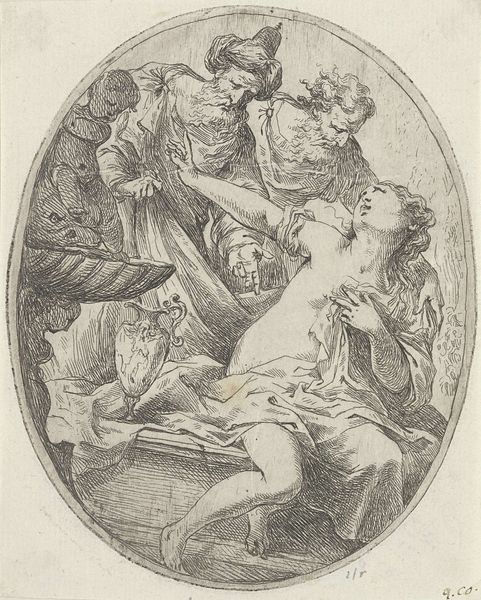
Copyright: CC0 1.0
Editor: Here we have Johann Gottfried Saiter's "Adultress before Christ." It's an engraving, and the scene feels really tense, almost accusatory. What do you make of this politically charged image? Curator: It's a powerful depiction rooted in societal and religious doctrine. Note how the figures are arranged, with Christ almost mediating between the woman and the judging crowd. Consider the role engravings played in disseminating such narratives, shaping public morality through accessible imagery. Does the artist make any particular choice to position the crowd in the background? Editor: They do seem to be lurking, almost conspiratorial. So, the print itself becomes a tool to reinforce these power dynamics? Curator: Precisely. And think about who controlled access to these images – the Church, the wealthy. The artwork reflects and reinforces their authority. Editor: It's unsettling to see how art can be complicit in such judgment, even today. Curator: Indeed, examining these historical works helps us understand the ongoing politics of visual representation.
Comments
No comments
Be the first to comment and join the conversation on the ultimate creative platform.
